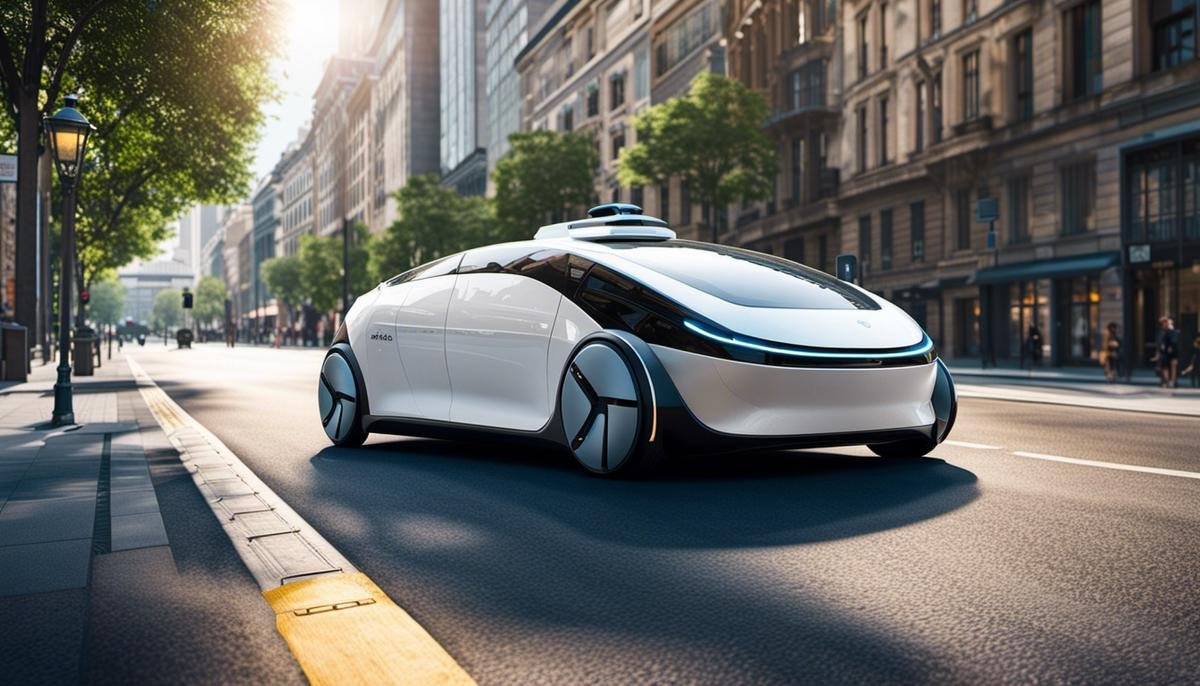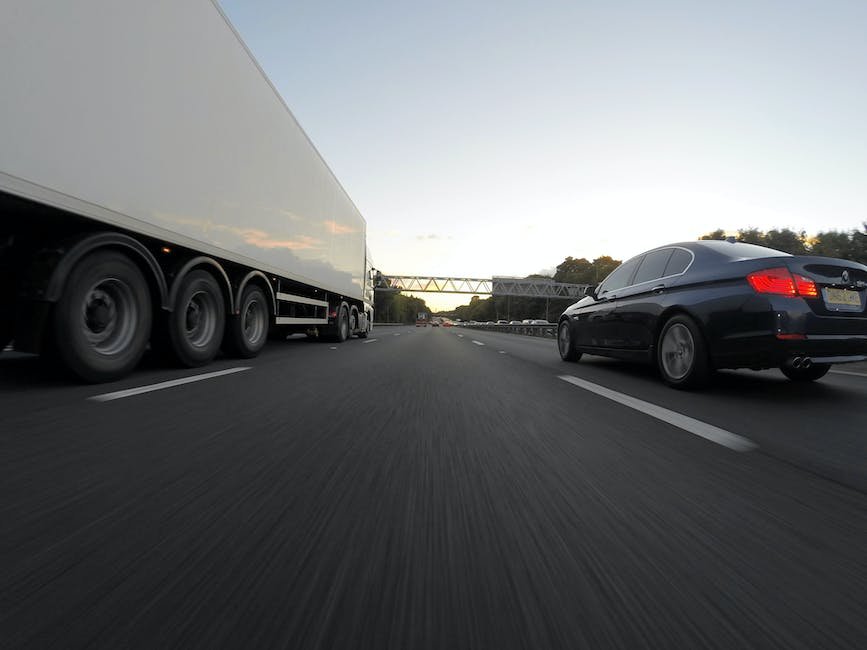In an era marked by technological revolutions and innovative possibilities, autonomous vehicles have emerged as a grand advancement poised to redefine our notions of transportation. Traditional vehicles, controlled by human intervention, are being rapidly surpassed by self-driving vehicles, powered by complex algorithms, a multitude of sensors, and cutting-edge AI. This transformative technology, which encapsulates both opportunities and provokes challenges, is shaping the future of mobility.
Understanding Autonomous Vehicles
Understanding Autonomous Vehicles: The Basics
Autonomous vehicles, often referred to as self-driving cars, rely on a combination of complex algorithms, sensors, and advanced mapping systems to navigate the world without the need for a human driver. At the heart of these vehicles is an intricate network of sensors, which include lidar (light detection and ranging), radar, and cameras, that relay real-time data to the vehicle’s onboard computer. Together, these components create a highly detailed view of the surrounding environment.
The lidar system functions by sending out pulses of light which bounce back upon hitting an object, allowing the system to calculate distances and create a three-dimensional map of the environment. Radar technology, much like in aviation, uses radio waves to detect and measure the distance of objects around the vehicle, even in poor weather conditions. Cameras provide additional, more conventional visual input, identifying things like traffic signals, pedestrians, and other vehicles.
The collected data is then analyzed by computer algorithms that make real-time decisions, such as when to change lanes, turn, accelerate, or brake. These complex calculations require significant computing power, made possible by advancements in artificial intelligence and machine learning.
Significance in Today’s Society
The advent of autonomous vehicles holds the potential for significant change in various aspects of our lives. For one, it could lead to a drastic reduction in accidents, most of which are currently caused by human error. It could also reshape our cities, reducing the need for parking spaces as self-driving cars could be continually on the move, dropping off one person and picking up another.
In a broader perspective, autonomous vehicles could also have significant environmental benefits. Electric autonomous vehicles could reduce greenhouse gas emissions, especially as these vehicles could be programmed to drive in the most energy-efficient way possible.
A Journey Through Autonomous Vehicle Levels
The journey to complete autonomous driving can be charted through different levels of vehicular autonomy. These levels, as outlined by the Society of Automotive Engineers (SAE), span from 0 to 5.
A Level 0 designation signifies no autonomy at all. Shifting to Level 1, we see inclusive features like adaptive cruise control and parking assistance, though the human driver maintains primary control. Level 2 advances the vehicle’s capabilities with elements like autopilot, enabling the car to manage steering and acceleration/deceleration, yet requiring the human driver to retain vigilance, ready to take the wheel as necessary.
Level 3 elevates us closer to complete autonomy, with the car managing every aspect of driving but occasionally seeking human intervention when faced with an uncertain scenario. Level 4 signifies true driverless operation within prescribed settings such as specific geofenced areas or certain weather conditions.
At the apex, we have Level 5, signifying full autonomy. Level 5 autonomous vehicles make no demands for human input, they have no provision for manual control, and they function under all conditions and environments a human could handle. This pinnacle of automation encapsulates the ambition of numerous developers in the orbit of autonomous vehicle technology.

Benefits and Challenges of Autonomous Vehicles
The Unquestionable Upsides of Autonomous Vehicles
The paramount advantage forecasted from a future filled with autonomous vehicles is an appreciable leap in safety. With the National Safety Council attributing 94% of car accidents to human error, removing the fallible human factor seems a promising remedy. Autonomous cars are engineered to eliminate human input, consequently aiming to drastically cut down the number of accidents. Expanding this context, these vehicles can also cooperate, coordinating movements to prevent collisions.
Efficiency is expected to witness a crescendo with the introduction of autonomous vehicles. Leading to less traffic congestion and more precise driving, these vehicles are predicted to make journeys shorter and smoother. Autonomous vehicles can craft the most efficient routes, thereby saving time, reducing fuel consumption, and potentially contributing to a healthier environment.
Autonomous vehicles invite inclusivity and accessibility. With autonomy, physical ability takes a backseat, enabling the elderly or disabled, who were previously unable to navigate traditional vehicles, to explore personal mobility. This liberation to move independently and safely marks a transformative step towards an inclusive future.
Obstacles in the Progress of Autonomous Vehicles
Autonomous vehicles, while ideal, have several marked barriers to overcome before they’re ready, legal and regulatory issues being some of the key ones. The lack of a comprehensive set of laws for self-driving vehicles indicates a significant gap. Questions on accident liability, regulatory particulars, and information privacy all require detailed legal frameworks.
Beyond the legal hurdles are ethical conundrums. The tricky question of programming an autonomous car’s response to unavoidable harm, such as choosing between damaging property or a pedestrian’s safety, still looms large.
Moreover, the public’s trust and acceptance of these self-driving vehicles remain uncertain. It’s predominantly due to apprehensions about machine errors, security breaches, or malfunction. According to a 2020 American Automobile Association survey, 71% of respondents indicated fear of riding in fully autonomous vehicles.
Looking into the future, the job market could also be a major battleground. While the demand for conventional roles like taxi and truck driving may dwindle, the emergence of this technology could also spur the need for unique skill sets and spring up new job sectors.
The last obstacle lies in striking a balance between autonomous and human-driven vehicles. For a considerable time, both are likely to co-exist, making it crucial for the artificial intelligence of autonomous cars to successfully predict and react to human behavior.

Impact on the Transportation industry
The Potential Uproar in the Transportation Sector by Autonomous Vehicles
While the hurdles are aplenty, the advent of autonomous vehicles (AVs) also signals a potentially transformative shift in the transportation sector. The impact of this technology isn’t limited to merely private vehicles. It stands to revolutionize commercial trucks, taxis, ride-hailing services, and even public transit.
Impact on Taxi and Ride-Sharing Services
In the realm of taxis and ride-sharing services, autonomous vehicles could dramatically alter the operational landscape. Currently, the major share of the cost for taxi and ride-sharing companies such as Uber or Lyft is attributed to human drivers. If these vehicles become driverless, it will drastically cut operating costs, translating into cheaper fares for passengers. This could also enhance service reliability and reduce wait times, as autonomous vehicles can be dispatched more efficiently based on passenger demand and location.
Changes to the Commercial Trucking Industry
The commercial trucking sector could also see marked changes with the implementation of autonomous vehicles. Long-haul truck routes could become much more efficient, as the need for driver rest times would be eliminated, allowing for near-continuous transport. This could lead to faster delivery times and reduced costs for goods – a benefit that would likely trickle down to consumers. However, it also raises concerns about potential job displacement for truck drivers.
Transformation of Public Transport
Public transport is another area that could benefit from autonomous vehicles. Automated buses or trams could operate on a 24/7 basis without the need for driver shifts and other labor-related concerns. These vehicles could also be programmed to optimize route efficiency based on real-time passenger demand data. However, similar to trucking, this innovation presents potential employment challenges for bus drivers and other transit workers.
Effects on City Planning and Car Ownership Trends
Autonomous vehicles also have the potential to radically reshape our urban spaces. City planners might have to rethink traffic flow, parking, and public transportation to accommodate for the dominance of autonomous vehicles on the road. There may be a reduced need for parking spaces in city centers, which could be repurposed for other uses, if ride-sharing autonomous vehicles become common.
Owning a vehicle might become less essential, especially in urban areas where an autonomous vehicle could be hailed at any time, resulting in a shift away from private car ownership towards fleet-based services. Furthermore, with the potential for vehicle communication, there may be decreases in traffic congestion, improving the overall efficiency of transportation within cities.
It is clear that Autonomous Vehicles (AVs) are set to cause profound changes in several sectors. Some of these changes are widely applauded, but they come with unique challenges too. Top among these is job displacement and an unavoidable transition period likely to strain existing rules, norms, and our physical infrastructure. As we embrace this transformative technology, it’s essential to also consider and address the social ramifications that come with it.

Market Trends and Future Projections
The Present Situation of the Autonomous Vehicles Market
In recent times, the autonomous vehicles sector has experienced a significant surge. It is fueled by the remarkable strides made in technology as well as the increased interest from tech giants and automobile manufactures. Today, companies such as Tesla, Alphabet’s Waymo, Uber’s self-driving arm, and traditional car manufacturers like General Motors, Ford, and BMW are major stakeholders. Their focus is on autonomous vehicle technology development, with investments flowing generously into the field.
The autonomous technologies they’re working on range from Level 2 – partial automation that still requires driver involvement – to Level 5, which is full automation with zero need for human input. Tesla’s ‘Autopilot’ – a Level 2 automation system has been well received, and at the same time, Waymo is already offering Level 4 robo-taxi services in certain localities.
The trend of forming unique alliances to bolster the development pace is another distinct feature seen in this market. One example to note is the collaboration between traditional car maker General Motors and tech heavyweight Microsoft to hasten the commercialization of autonomous vehicles.
Significant Developments in Autonomous Vehicle Technology
Several technological developments have been playing crucial roles in driving the market. On the hardware side, LiDAR (Light Detection and Ranging) technology, which allows vehicles to map their environment in 3D, is now more efficient and cost-effective, while advancements in AI and Machine Learning algorithms are enabling more responsive and adaptive autonomous driving systems.
On the regulatory front, consideration has been given to the evolving landscape. Countries like the US, China, and Singapore are among those drafting or implementing regulations for testing and deployment of autonomous vehicles.
Projections for the Future of Autonomous Vehicles
Taking present trends into account, the future holds great potential for autonomous vehicles. Market research indicates that the autonomous vehicles market could exceed $60 billion by 2030. Factors influencing this projection include advancements in technology, regulatory support, increased investment in infrastructure, and growing consumer trust in autonomous driving systems.
In terms of technological advancements, this sector is continuously evolving and refining its features. For example, Tesla’s FSD (Full Self Driving) beta is being tested and improved continuously. Also, innovations in edge computing, telecommunications (5G), and AI are set to significantly enhance the performance and capabilities of autonomous vehicles, pushing the industry towards higher levels of automation.
Technology Advances that Influence the Autonomous Vehicles Sector
Beyond hardware and software advances within the vehicles themselves, improvements in related technologies will also have notable impacts on the evolution of autonomous vehicles. A key example is the advent of 5G technology, which enables faster, more reliable wireless communication. This can greatly enhance vehicle-to-vehicle and vehicle-to-infrastructure communications, which are critical for the safe and efficient operation of autonomous vehicles.
Moreover, the growth of smart city initiatives around the world could provide additional momentum to the autonomous vehicles sector. Connected traffic lights, smart road sensors, and other infrastructure advances can interact with autonomous vehicles, facilitating more efficient traffic flows, reducing congestion, and improving road safety.
In conclusion, the autonomous vehicles market is robust and poised for significant growth. Its future trajectory will likely not just be shaped by innovations within the industry, but also by advances in complementary technologies and broader societal trends.

Drawing from the vast potentials and the surmounting challenges, it is apparent that autonomous vehicles are not a mere figment of science fiction, but a tangible future that society is gradually navigating towards. The advancements in technology, market trends, and the transformative impact on the transportation industry all hint towards the inevitable pervasiveness of autonomous vehicles. However, it’s crucial to foster a collaborative approach in envisaging and shaping this future, ensuring that the technology’s potential is harnessed to augment safety, efficiency, and accessibility, while surmounting the ethical, regulatory, and societal challenges that lie in the path of this promising frontier.



